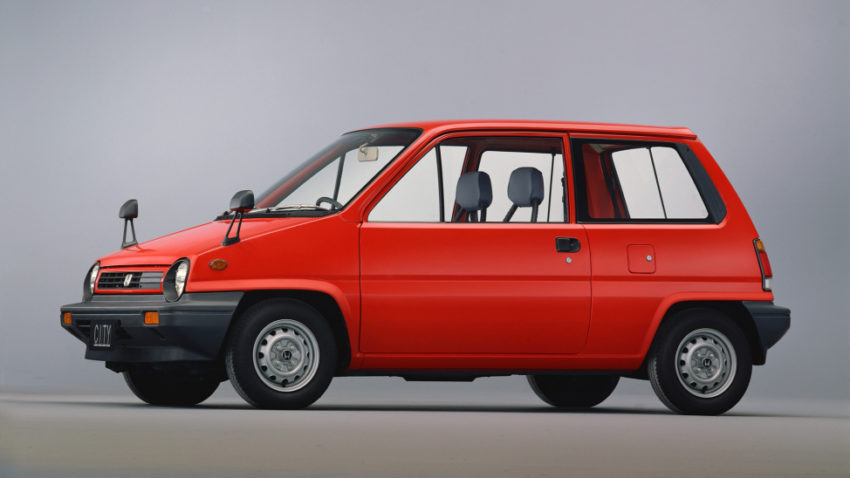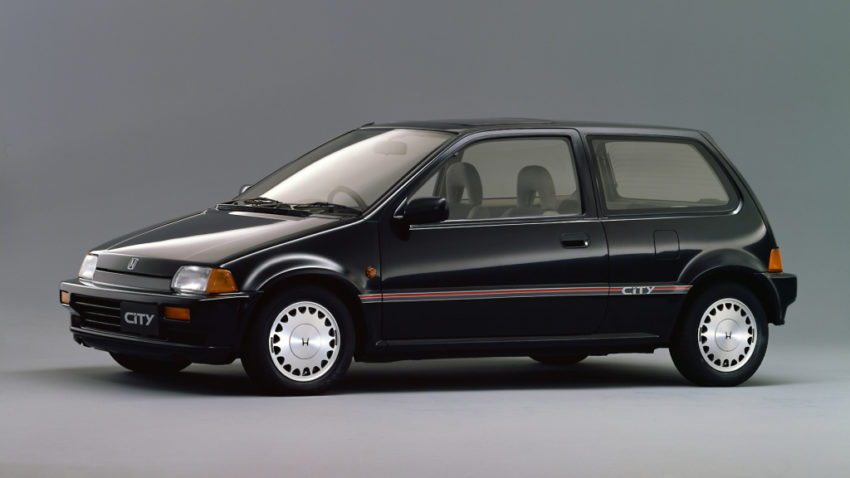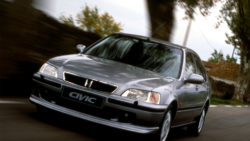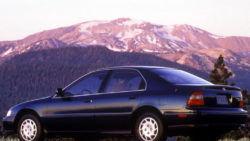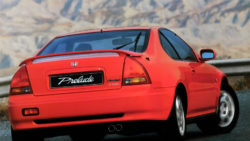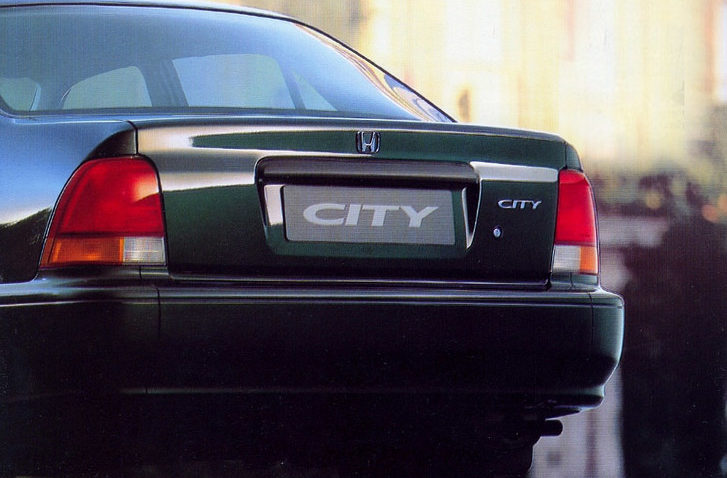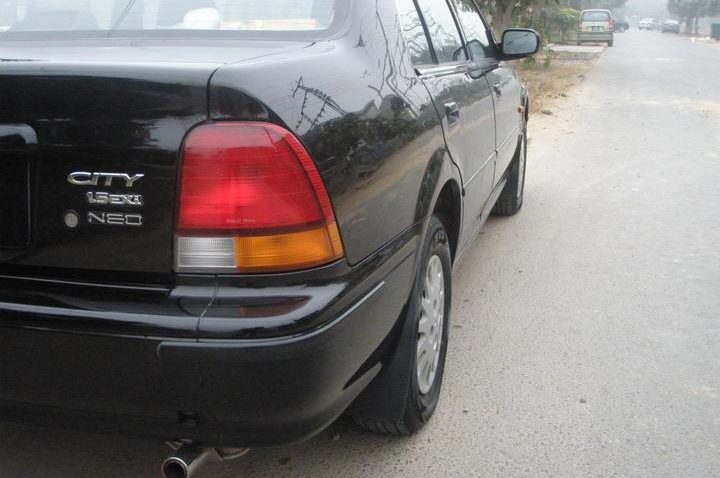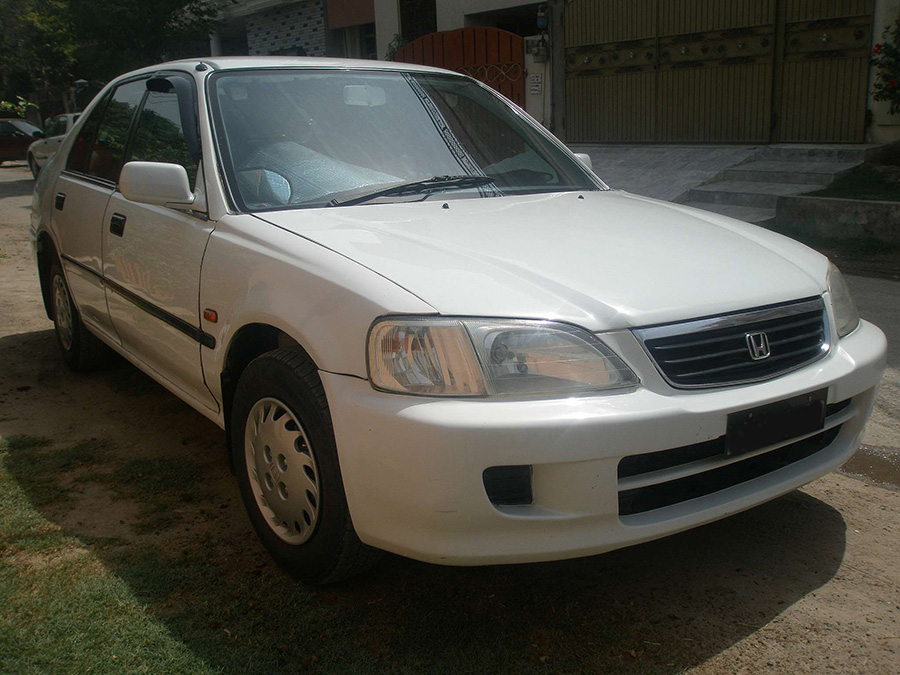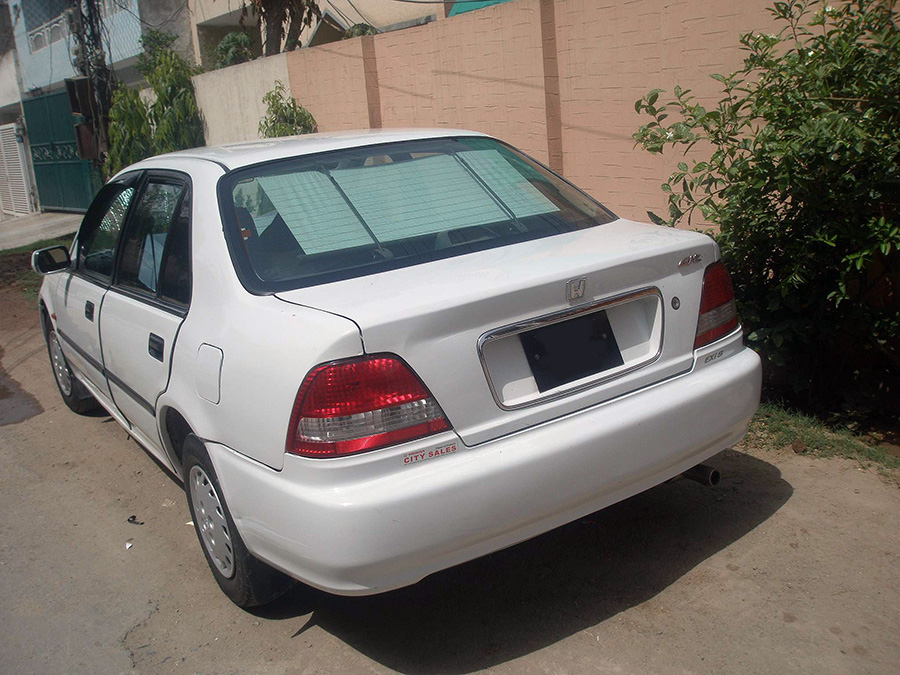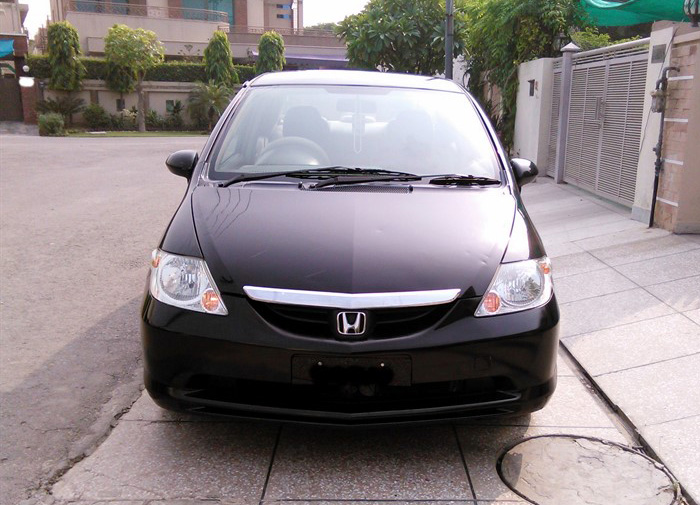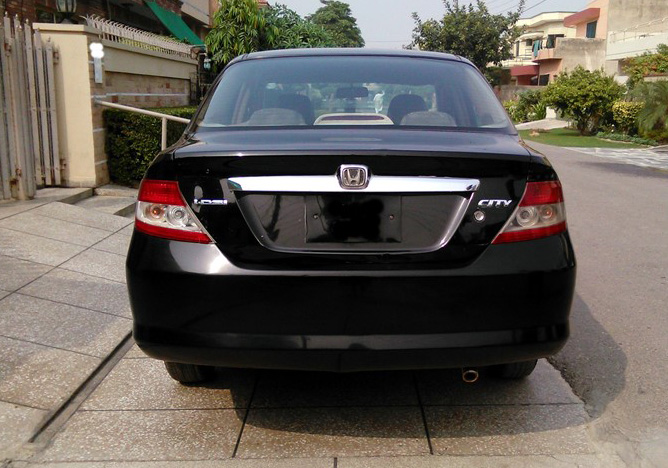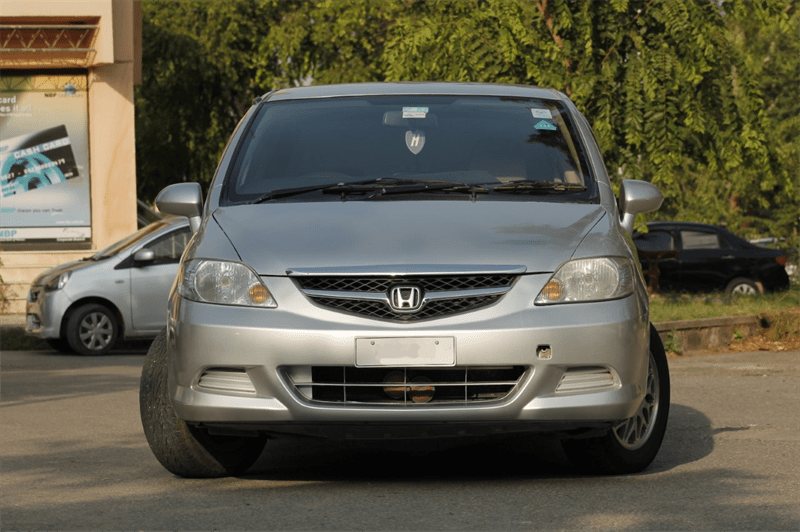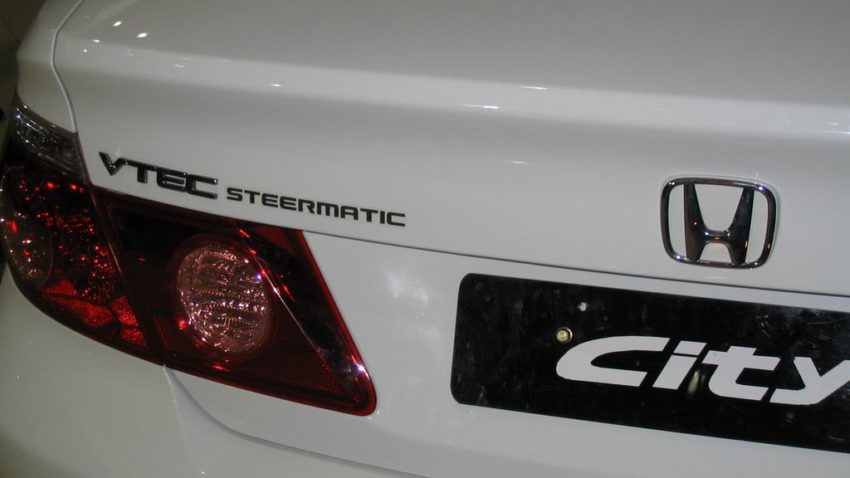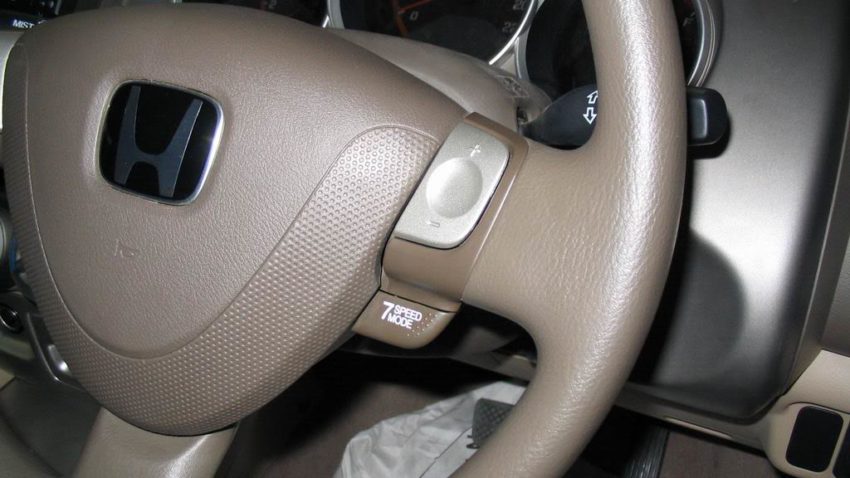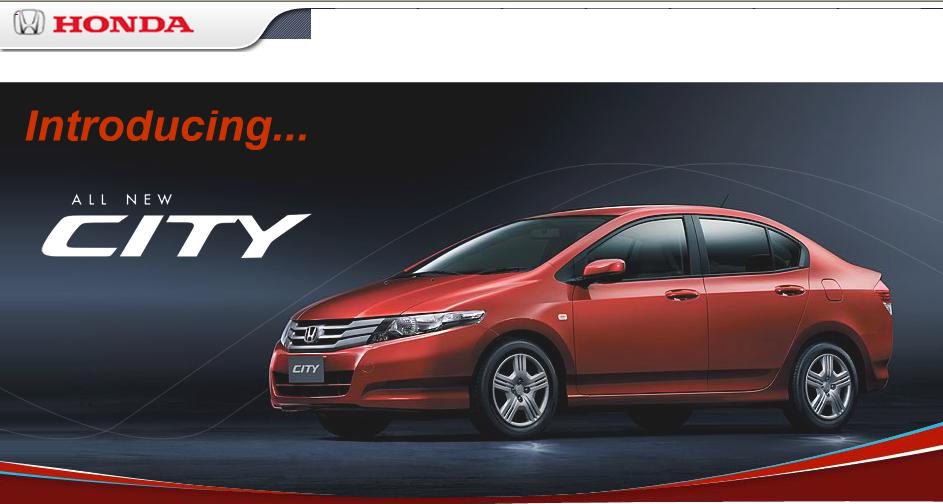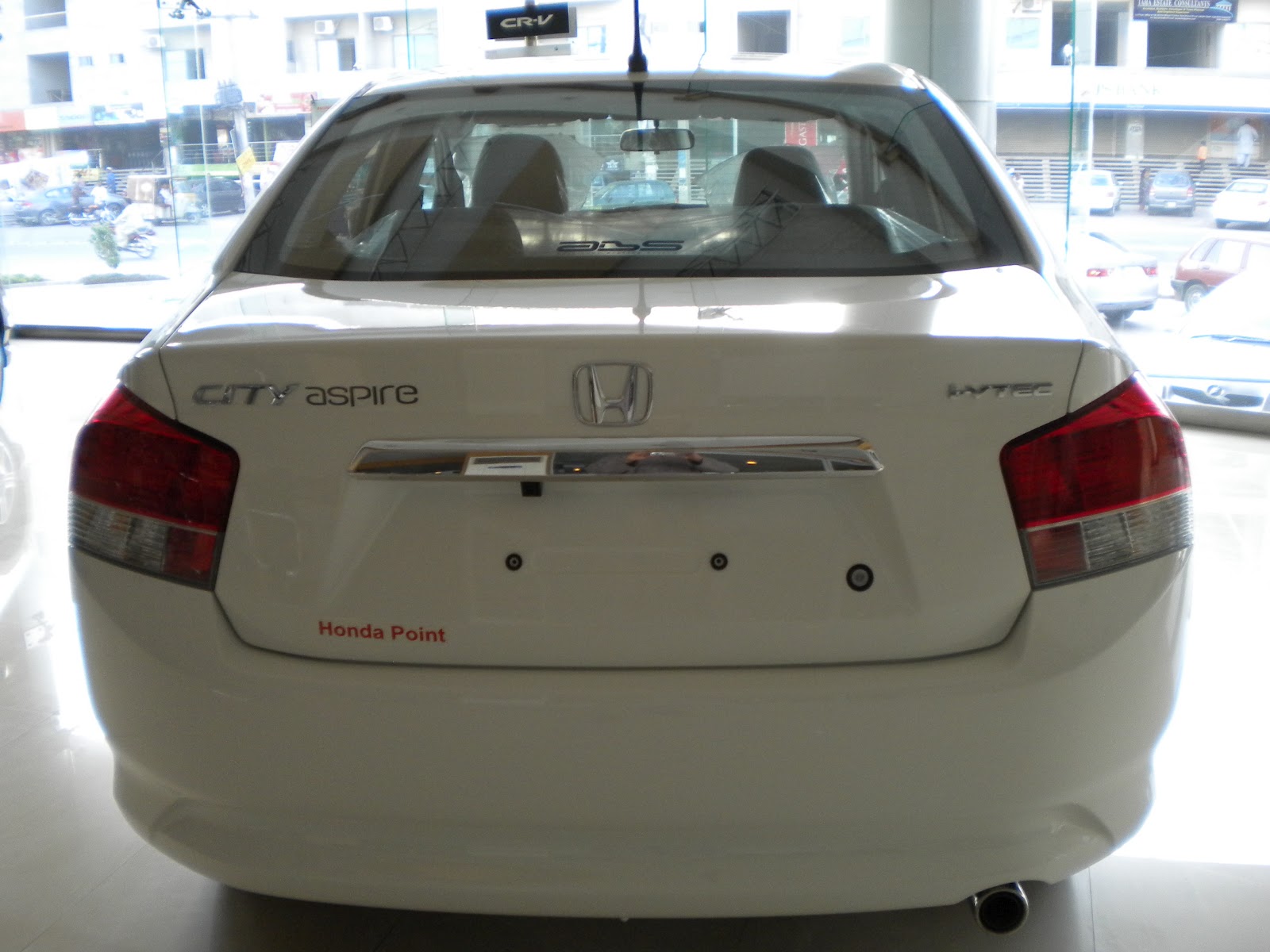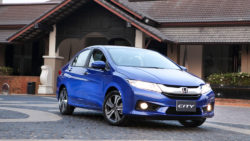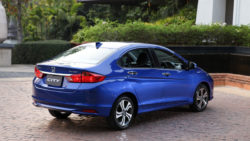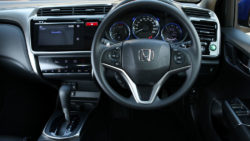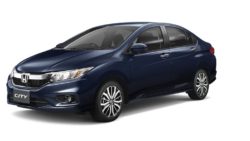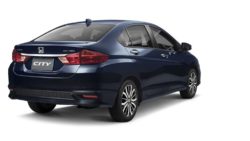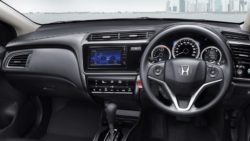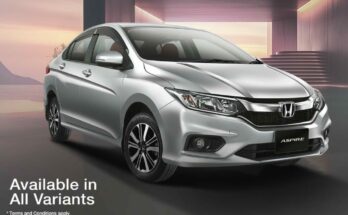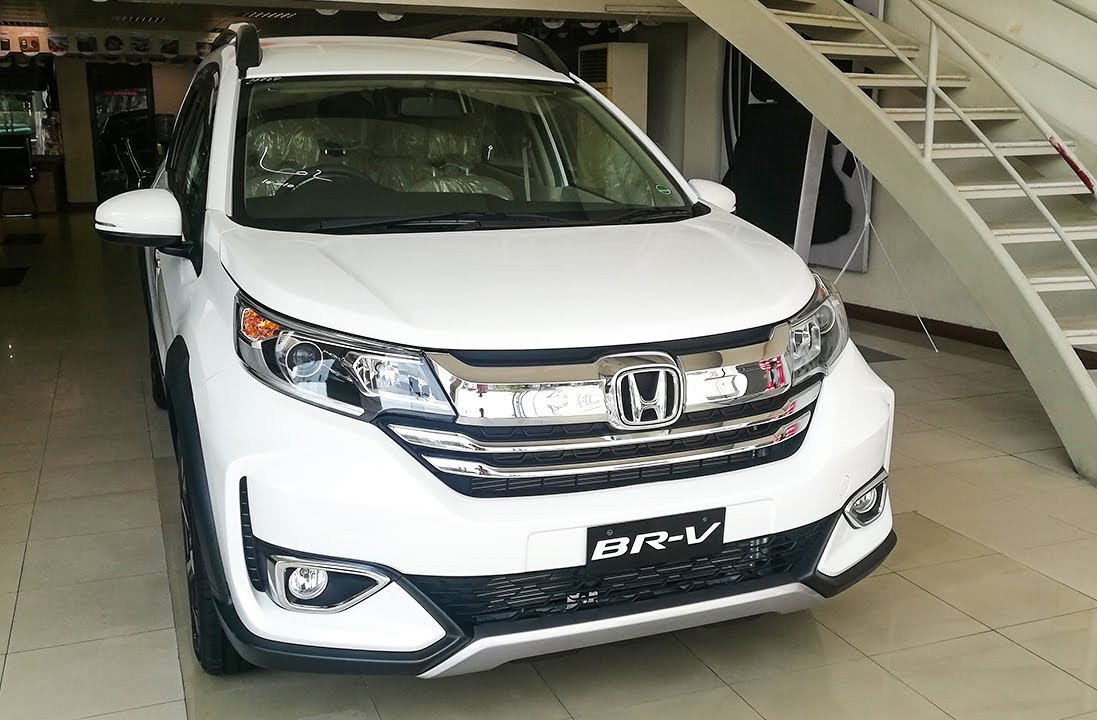The City sedan was first introduced in Pakistan by Honda Atlas in January 1997. On 22nd January 2019 the popular subcompact completed its 22 years in our country. We take a look back at the three generations of Honda City that were produced in Pakistan since January 1997 up until now.
The History
The ‘City’ name was first used by Honda to sell small hatchbacks primarily for Japanese, European and Australasian markets that rivaled the likes of Nissan March in the 1980s. There were two generations sold between 1981 and 1993. The first generation City was produced between 1981 and 1986 while the second generation was produced from 1986 to 1993. However by year 1993 the ‘City’ was officially retired as it was unable to compete with the rivals.
The New Beginning
The ‘City’ was resurrected in 1996 under the code name SX8 specifically designed for the ASEAN markets. Instead of spending more resources on developing an entirely new car, Honda grabbed their previous EF-series 4th generation Civic chassis, their proven D-series engines and restyled the interior & exterior to give the car a refreshing look. The bumpers were constructed in three separate pieces to allow for easier shipping from Japan. In many of its intended markets the SX8 was one of the few sub-compacts with a fully independent rear suspension.
The City SX8 Launched in Pakistan
In January 1997 Honda decided to tap the entry level sedan market by launching the City sedan, which was something totally new for our market. For a car buyer in Pakistan it was a name never heard before. It is worth to mention that in 1990s every other car that was being assembled in Pakistan was an already established name and remained popular even before the local production was started.
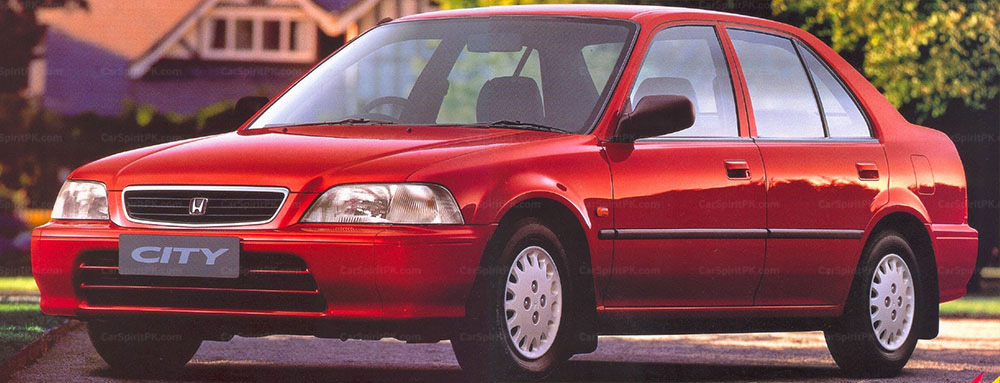
Toyota Corolla was popular in our market since mid 70s, Honda Civic was a prime choice since early 80s and similarly Suzuki Khyber, Mehran & Margalla sedan were already successful and available since the late 1980s. Considering this, the City SX8 which had literally no history in Pakistan, managing to become one of the most successful sedans in our market is something quite extra ordinary.
The Design
As mentioned earlier, Honda instead of spending resources on developing a new car from scratch, made good use of their library. The design was sober & elegant and was well synergized with the existing Honda family of that era. The front end was heavily inspired from the EU-Spec Civic MA/MB, while the rear end was reminiscent to that of fifth gen Accord. Honda’s of that time used to have tail lights that were almost vertically cut by the boot lid, having a large red area for stop lamps while a bottom horizontal strip comprising of indicator & reversing lights. The distribution of tail lamps was quite identical to that of fourth gen Honda Prelude.
Why the SX8 become so successful?
Up until 1997, Suzuki Margalla the only entry-level subcompact sedan in our market had soaring sales figure of more than 6,000 units a year which was quite impressive for its time however its sales started to suffer when the Honda City SX8 came into picture. The sales of Margalla were affected so badly that the Suzuki sedan which sold at 6,000 units a year, managed to sell just around 3,000 units per year after the introduction of Honda City SX8 in 1997.
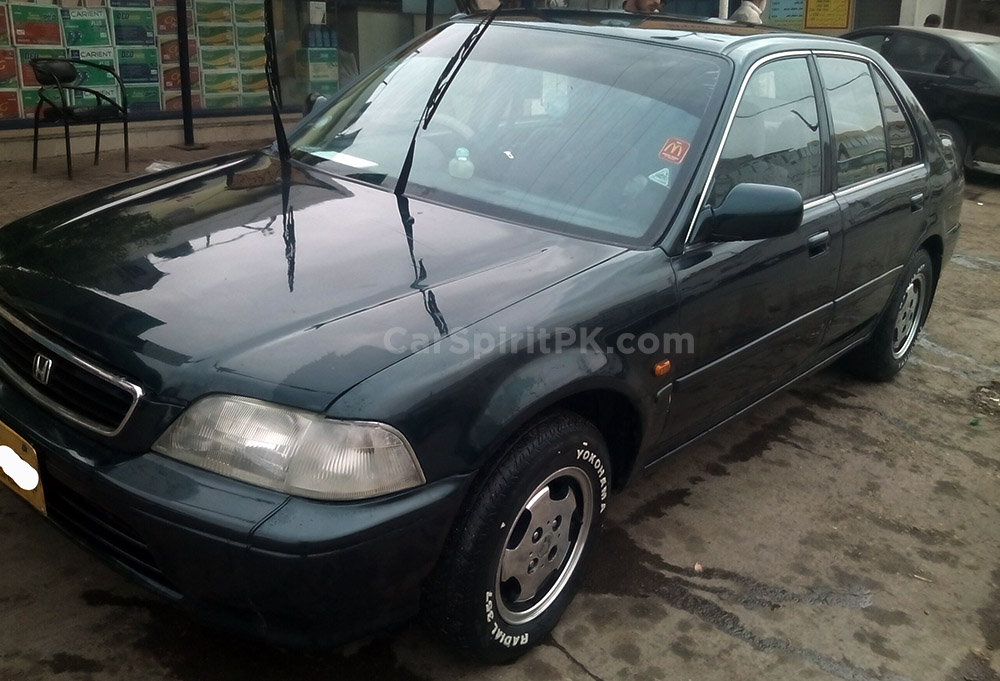
The City SX8 was a class apart and literally outshined Margalla in every possible department. The SX8 offered a modern yet sophisticated design, smooth & unmatched drive, exceptional built quality, powerful and soundless engine, excellent acceleration & speed, superior a/c, generous room and comfortable seating positions, fully power packed, responsive power steering, effortless gear change, class leading luggage volume, you name it.
Related: 7th Generation Corolla E100- The Most Popular Corolla in Pakistan
The D13B Hyper 16 valve engine despite being carbureted was powerful yet smoother than the existing carburetor-based rivals of that era. While the D15B Efi version called as the Neo was considered as one of the fastest road going sedans assembled in Pakistan.
Since the City SX8 was largely based on the 4th generation EF Civic, most spare parts were already available in the market. People are generally reluctant to go for a new car but the City even being new and expensive than the Margalla (but cheaper than the base Corolla XE which came without power windows/ tachometer and had black bumpers) won the hearts of people and became an instant hit right from the first month of its launch.
The City SX8 Facelift
3 years later the popularity of the SX8 City was taken to next level when in January 2000, Honda brought the facelift here. The launch of the facelift City also included a promotional song, sung by Ali Noor (Noori) featuring the then supermodel Amna Haq. This music video was frequently aired on local TV channels by Honda back in those days.
Exterior wise the car was transformed from a sober looking sedan into a typical aggressive Honda now featuring bold crystal headlamps, different rear combination lamps while the 3-piece bumpers were replaced with a single unit bumper design. Stylistically the facelift SX8 is undoubtedly one of the best looking Hondas ever to appear in our market. The interior was now offered with a 4 spoke steering wheel, slightly different instrument cluster & upgraded door panels and power window switches.
The 1.3 liter engine was now available with Programmed Fuel Injection (PGM-Fi) and was mated to manual as well as automatic transmission. There was no 1.5 liter version available with the facelift though. The SX8 facelift is considered as one of the most loved models of Honda City. With its low-slung body, light weight, responsive engine, excellent suspension setup and striking looks the car was a complete package within itself.
The Fourth generation City Arrives
It was August 2003, the 3rd gen City SX8 after a successful tenure of 6 years was replaced with the all new fourth generation GD City. The 4th gen was an entirely different car from the previous SX8 in terms of design, engine and the overall characteristics.
While the 3rd gen SX8 was primarily loved for its handling and road grip, the 4th gen was focused towards fuel economy & comfort. It came with a twin-spark, lean burn ‘i-DSI’ engine primarily designed to provide exceptional fuel economy. The 4th generation City was unique in numerous ways. It had a rear flat floor allowing tremendous legroom and comfort for the rear passengers. The fuel tank was located underneath the passenger compartment which resulted in quite a generous cargo space. The interior came in beige color for the first time in a Honda City. It had two glove boxes, which Honda dubbed as His & Hers… Due to presence of thick A-pillars which were enough to camouflage an incoming motorcyclist, Honda designers gave the front vent glass for better visibility which was something new considering that era.
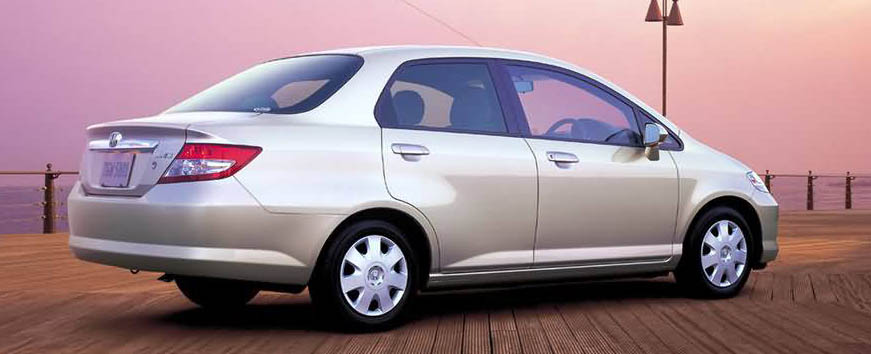
Related: Should Honda Atlas Introduce Brio & Amaze in Pakistan?
It was also the first locally assembled vehicle to come equipped with a CVT gearbox in Vario version, as well as the first to come with an electric power steering (EPS). The 4th gen City was also the first car in Pakistan with a Euro-III compliant engine. The 4th gen City sold more than 7,200 units in the first year of its launch (FY 2003-04) which was nearly twice as much compared to the SX8 facelift which sold a little more than 3,700 units in FY 2002-03.
4th gen City Facelift and the 1.5L Vtec Steermatic
In 2006 the Honda introduced the 4th gen City facelift along with a 1.5 liter Vtec version called as the Steermatic. Apart from engine, the Steermatic offered other improvements such as center arm rests and 15” inch wheels and a 7-speed transmission.
The 7 speed CVT transmission used in the City Steermatic offered the choice of a semi-automatic shift, allowing the driver to move progressively through seven carefully chosen ratios, just as you would with a manual gearbox. As well as the fun element of steering wheel-mounted controls, this arrangement also meant hands can be kept on the wheel for maximum control, especially useful on fast, winding roads.
Activating the 7-speed mode while driving in either D or S modes was simply achieved by pressing the ‘7 Speed Mode’ switch beneath the right hand spoke of the steering wheel. The driver can then effect gear changes by pressing the buttons mounted on either side of the steering wheel; for ease of operation each button provides both up (+) and down shifts (-). To change back to conventional CVT mode was simply a matter of pressing the ‘7 Speed Mode’ switch once more, when operation reverts to the PRNDSL shift lever.
Steermatic Failed
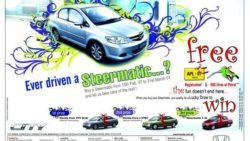
Despite all good, the Steermatic was unable to make its place in the market. Honda Atlas ran special promotions and even offered zero own, instant delivery, free registration and free 500 liters fuel with the purchase of the City Steermatic, but all in vain. And eventually Honda had to discontinue the model within just a couple of years of its launch. However the regular iDSI did extremely well in terms of sales. Honda sold more than 61,000 units of 4th gen City during its production lifespan from 2003 to 2008.
The Arrival of 5th gen Honda City
On 31st January 2009, the 5th gen City made its way in Pakistan. Visually the 5th gen was a great deal of improvement over its predecessor. It was sharp looking, bold and aggressive. It came equipped with a 1.3 liter Vtec engine that develops ample power of 100hp with improved fuel economy figures. The 5th gen was available in manual as well as automatic transmission.
On the downside Honda took away a lot of things from this City. There was no center arm rest, no fog lamps and no high mount rear stop lamp, not even a trunk light while the interior was all too grey & dull and missed silver embellishments that were found in international versions.
The Honda City Aspire
In 2012, after a brief hiccup in production due to massive flooding in Thailand, Honda Atlas resumed the production of 5th gen City with the introduction of new version called Aspire. The Honda City Aspire was visually identical to the standard City however it offered:
- Keyless Entry
- Alloy Rims
- Built-in Navigation Screen
- Multimedia System (with silver-on-black panel)
- Side Mirror Indicators
- Prosmatec Transmission option
- Leather Interior
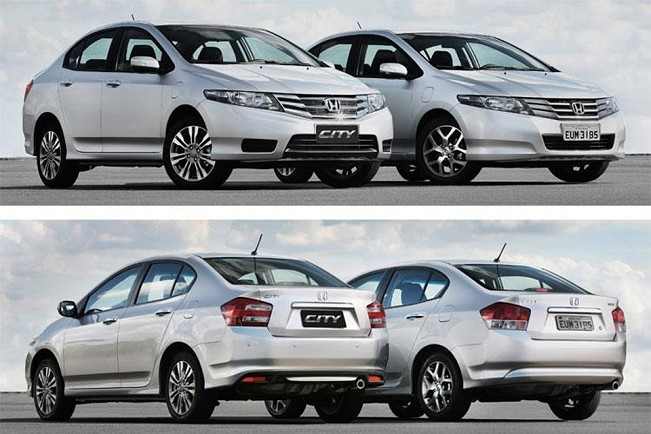
Honda’s tradition in Pakistan has been to launch a new model or a facelift after every 3 years. The Honda City SX8 which was introduced in January 1997 was updated with a facelift in January 2000. 3 years later in August 2003 the new City iDSI was launched, and was updated with a facelift in 2006, again maintaining the 3 year cycle. On 31st January 2009 the City iDSI was replaced with the new City iVTEC. Since then however Honda lost its tradition to be pioneers in updating their models in Pakistan. The facelift City iVTEC that was supposed to launch in 2012 arrived in 2014 and continues to sell here since 2009.
The Absence of Competition
One of the core reasons is the absence of competition. The City has been in competition with a Suzuki rival ever since, however the 5th gen Honda City never saw a real competitor. As Suzuki Liana was out of the competition by 2010, the City remains the only choice in the entry level sedan segment. It’s obvious that since there was no competition in the segment, Honda seems to be not interested in updating to a newer 6th generation City and is happy to continue selling the current model.
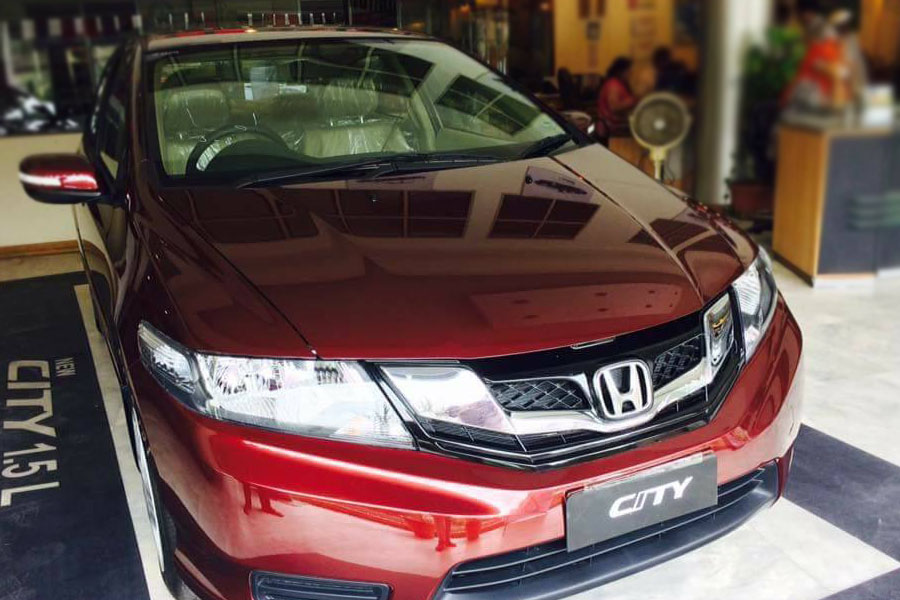
In a span of 10 years, the 5th gen City in Pakistan has probably received the most number of facelifts. Since 2017 alone, Honda Atlas has released two facelifts for the City sedan as it continues to be sold despite having been in production since 2009, the longest period for any locally assembled Honda model.
Honda Skipped the 6th generation Honda City
In global markets the 6th generation City was launched in late 2013, and has received a thorough facelift in 2017. The 6th generation City looks like an evolution of the 5th generation Honda City in some ways. Although the basic silhouette may appear to be the same, there is not one single body panel that has been passed on from the old car to the new one.
The interior has a totally redesigned dashboard, it has rear AC vents, a touch screen climate control system, a 5-inch LCD infotainment screen and lots of glossy black plastics that give the new City a sense of purpose. The overused silver bits that were used everywhere in the 5th gen City are replaced with lovely polished aluminum look. The new City has a low NVH (Noise, Vibration, Harshness) levels making the ride much quieter & relaxing compared to the 5th gen.
Related: Oligopoly Wins- Honda Atlas Keeps the 5th Gen City Alive!

In addition to the improved fuel consumption, the 6th gen 1.5 iVTEC yields more than 17 km per liter, it also handles better than the 5th gen thanks to tweaked suspension setup. The 6th gen City comes packed with goodies including reversing camera, whiplash mitigating head restraints, Anti Lock Brakes, six SRS airbags and Vehicle Stability Assist.
Having completed six years of its lifespan, the 6th gen City will be replaced by a newer 7th generation model most likely towards the end of this year. As per reports the next generation City, which will be heavily inspired by the new Accord and Insight Hybrid, will make its debut in Thailand towards the end of this year.
Related: Next Generation Honda City May Debut By Year-End 2019
Honda Atlas is yet to replace the aging 5th gen here, however it will be a better move to continue the fifth gen for another year and launch the 7th gen in 2020 rather than introducing the older 6th gen at this stage when the world is preparing to move on to the seventh generation City.
Based on your experience, which one do u think was the best Honda City generation in our market? Click to cast your vote and let us know with the comments..
[socialpoll id=”2482643″]

A computer animation professional with over 23 years of industry experience having served in leading organizations, TV channels & production facilities in Pakistan. An avid car enthusiast and petrolhead with an affection to deliver quality content to help shape opinions. Formerly written for PakWheels as well as major publications including Dawn. Founder of CarSpiritPK.com

